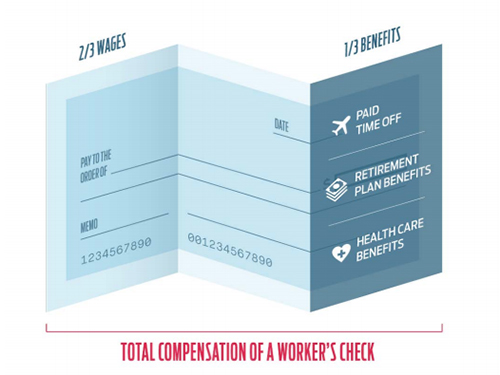By Lubmila Leiva
Refinery 29, April 10, 2019.
Every day across the U.S., workers get up abd go to work to make a living. And yet, as we were reminded this past Equal Pay Day, not everyone is making the same amount for the same work.
As it stands, women in the U.S. still make an estimated 80 cents for every dollar men earn. For women of color, the numbers are starker. Black women only make 63 cents to a white man’s dollar, and Latinas make just 53 cents. Some estimates are even lower, suggesting that women on average make just 49 cents for every dollar a man makes when taking into account earnings across a 15-year period.
This inequality is often discussed in terms of wages — after all, earnings discrepancies are the most glaring — but these imbalances manifest in many other forms. In fact, wages are just the tip of the iceberg, according to a new research study conducted by Brandeis University and The Workers Lab.

The report, just out today, is titled “Not Only Unequal Paychecks: Occupational Segregation, Benefits, and the Racial Wealth Gap,” and it takes a deep dive into the many ugly truths of occupational segregation and benefits disparities in the workforce. In addition to analyzing long-established trends — such as the lack of Black and Latinx employees in STEM positions and high-paying fields — the report also takes a look at how segregation has evolved throughout history to benefit white workers and disadvantage workers of color. Dr. Carmen Rojas, founder and CEO of The Workers Lab, is an expert on workers’ rights and financial systems and wants to raise awareness about how deep these inequalities run.
“We know that there is a deep connection between wages and wealth, but rarely do we highlight the passive systems of wealth accumulation that continue to rob Black and Latin[x] workers of the stability that should come from hard work,” says Dr. Rojas, adding that the most notable system is the racialization of workplace benefits, such as retirement and healthcare. Dr. Rojas adds that one-third of compensation comes from these benefits. “Since Black and Latin[x] workers are concentrated in low-wage and low-earning industries, they are not able to fully enjoy or participate in the benefits that allow for stability.”
The study examined five key industries, finding that nearly two-thirds of Latinxs work in the lower-paying restaurant and construction jobs that offer few or no benefits to employees. When it comes to pension benefits, Black and Latinx workers miss out on $5,600 and $9,800, respectively, while denial of healthcare coverage robs these groups of $2,700 and $5,400, respectively. The research also suggests that even when working people of color do enter higher-compensated fields, they still face gaps in pay and substantial differences in financial security when compared to their white counterparts.
The study found that these troubling racial and ethnic disparities will continue unabated until proactive policy interventions are enacted. “Policymakers, unions, advocacy groups, and employers all have key roles to play in generating and enhancing work to wealth connections by promoting labor and social policies that support fair compensation, access to insurance, and appropriate savings opportunities for employees,” the study concludes.
Ultimately, work is a fundamental part of life and society, and it should lead to economic security. But until policymakers, businesses, unions, and advocates commit to fighting on these issues and improving the conditions for workers in this country, these circumstances aren’t likely to change.











